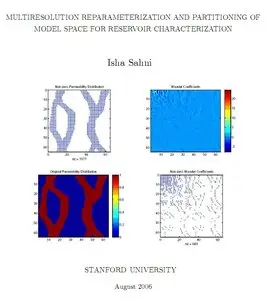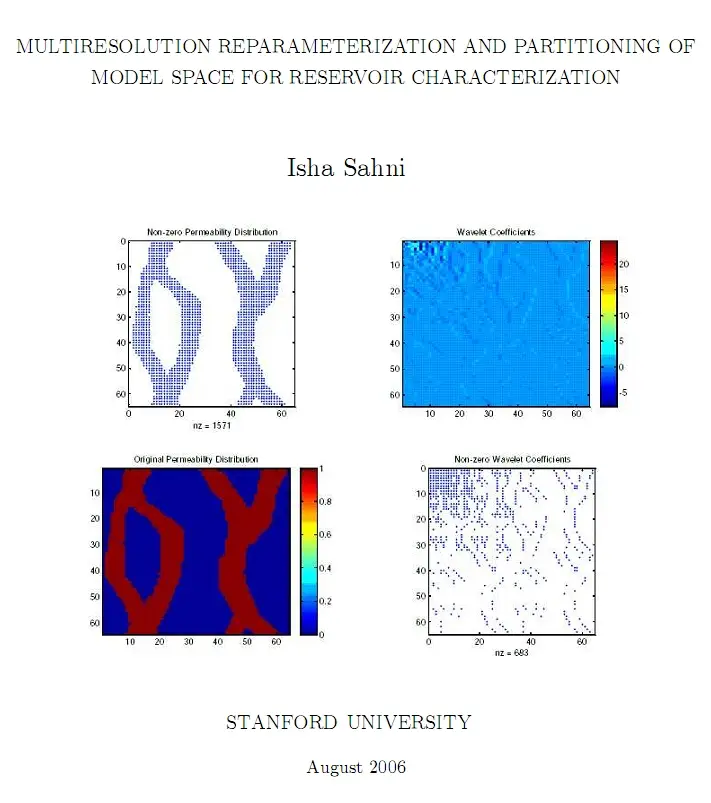"Multiresolution Reparameterization and Partitioning of Model Space for Reservoir Characterization" by Isha Sahni
Stanford University | 2006 | ISBN: n/a | 226 pages | PDF | 5 Mb
This work develops a generalized wavelet-based methodology for stochastic data integration in complex reservoirs models. This is an extension of earlier work for simpler reservoir descriptions.
A single history-matched reservoir permeability model is combined with a stochastic geological description to obtain multiple equiprobable reservoir descriptions using wavelet transforms of the parameter distribution (permeability). The algorithm has been extended and generalized to be usable with commercial reservoir simulation software and to enable handling of three-dimensional models and production scenarios. Described a study of sensitivity coefficient distributions, thresholding and averaging techniques, and a comparison of different Haar wavelet implementations. Wavelet coefficients of reservoir parameter distributions can, to some extent, be partitioned into sets of history-matching and geologic coefficients and modified independently. Inverse transformation of these coefficients yields multiple reservoir model results, all of them matched to history. A significant reduction in time can obtained for stochastic modeling of reservoirs by the decoupling of production data and other parameters, since only a single history match is required. Thus the proposed algorithm addresses the issue of stochastic modeling of complex reservoirs by integrating all available sources of information. From a single history-matched model we obtain a set of distinct equiprobable reservoir models that can then be used to evaluate uncertainty and make future production predictions and reservoir management decisions.



